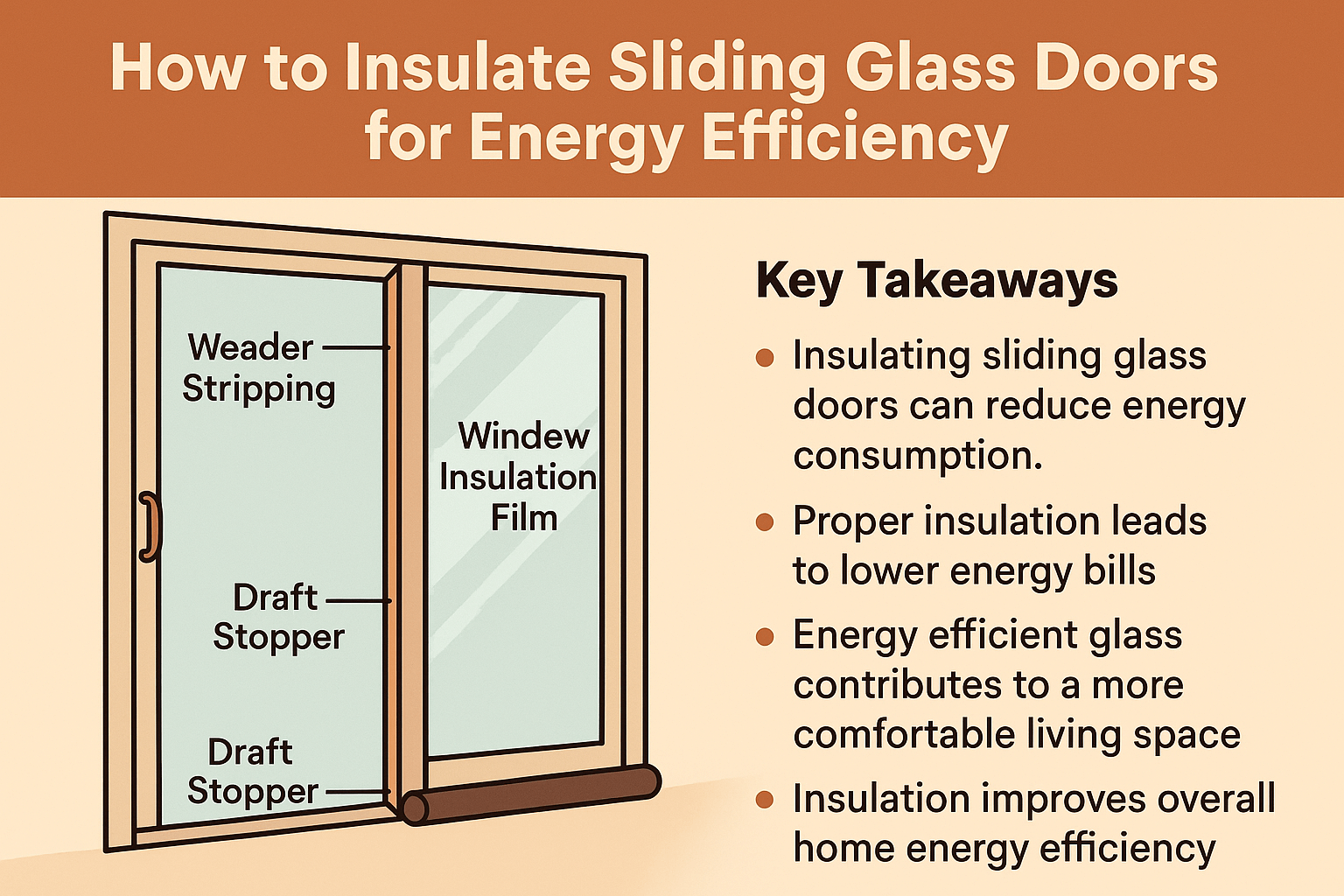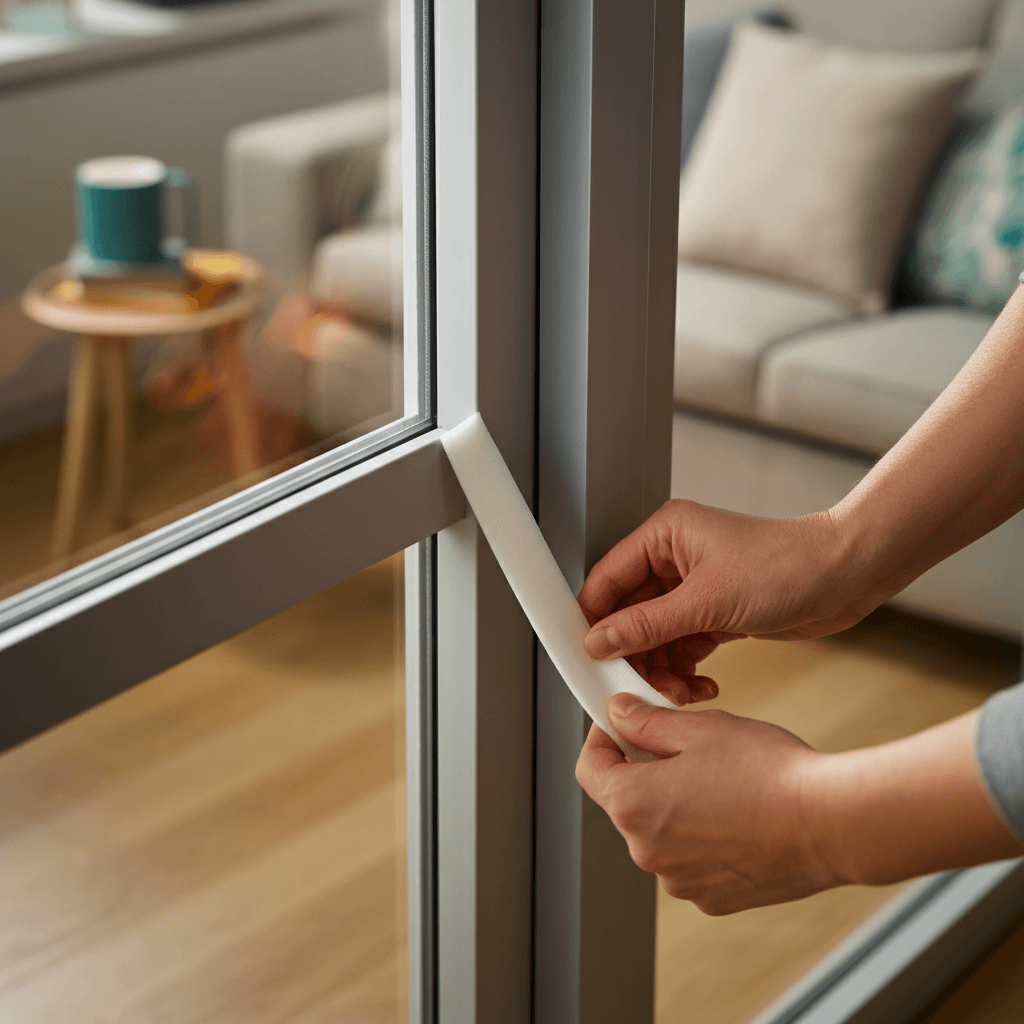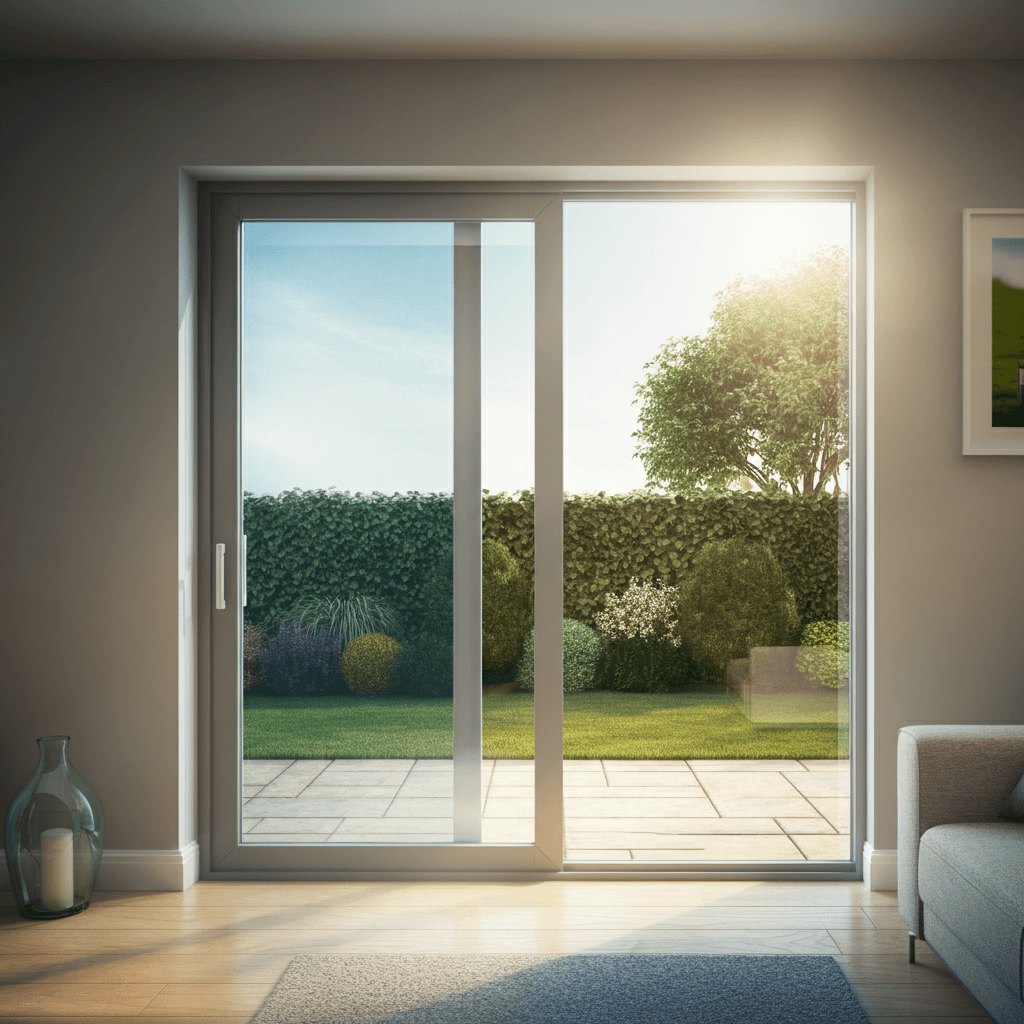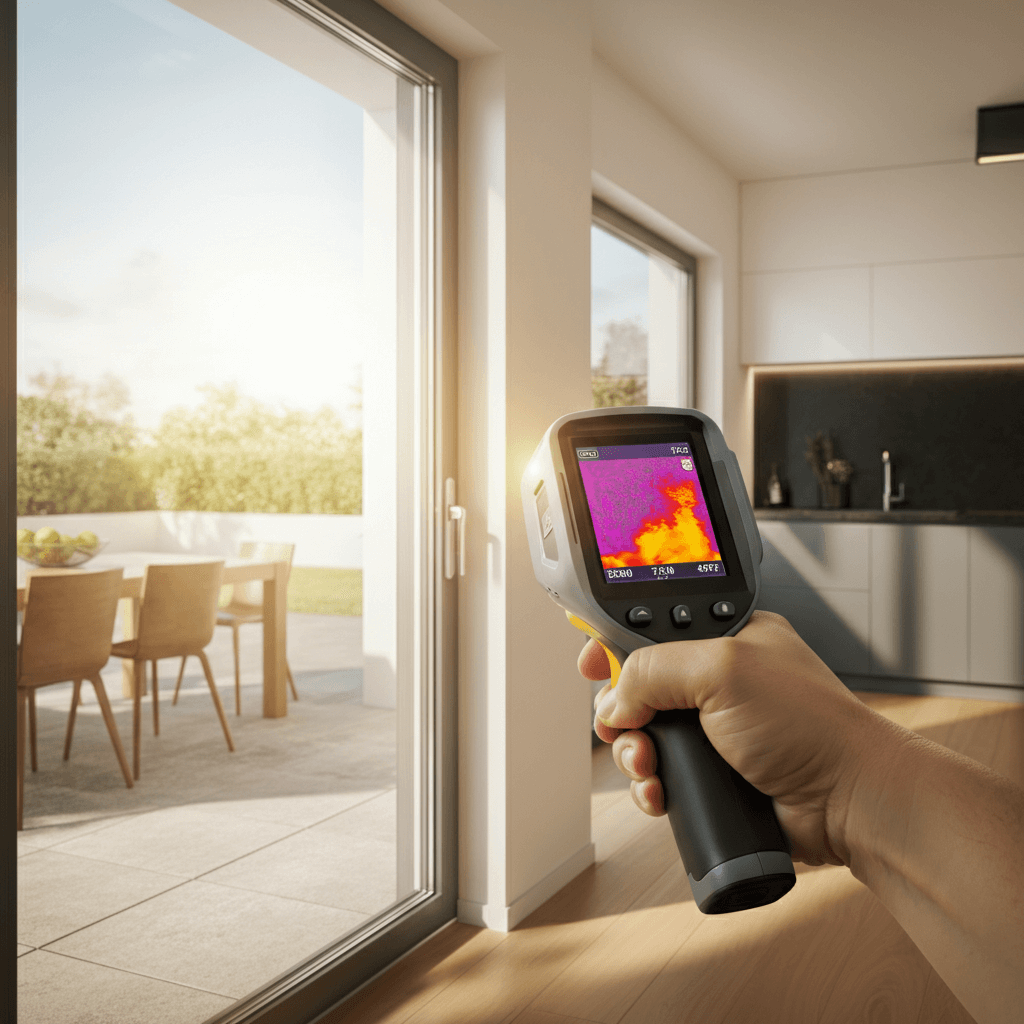How to Insulate Sliding Glass Doors for Energy Efficiency
Release time:
2025-05-06 14:39
How to Insulate Sliding Glass Doors for Energy Efficiency
Did you know that up to 30% of a home's heating and cooling energy can be lost through doors and windows? This can cause your utility bills to go up and make your home less comfortable. Energy efficient glass and the right insulation can really help.
Insulating sliding glass doors is key to saving energy and making your home more cozy. It helps you save money on your energy bills and keeps your home's temperature steady.

By insulating these doors, you not only save energy but also help the planet. It's a step towards a greener home.
Key Takeaways
- Insulating sliding glass doors can reduce energy consumption.
- Proper insulation leads to lower energy bills.
- Energy efficient glass contributes to a more comfortable living space.
- Insulation improves overall home energy efficiency.
- A more consistent indoor climate is achieved through proper door insulation.
Understanding Energy Loss Through Sliding Glass Doors
It's key for homeowners to know how energy loss happens through sliding glass doors. These doors let in natural light and look great. But, they can also let a lot of heat in and out.
Common Energy Efficiency Problems
Sliding glass doors can be a big problem for heat transfer. Unlike solid walls, they don't block heat well. This means warm air can get out in winter and cold air in summer. This can make your heating and cooling bills go up.
Also, air leaks around the doors make things worse. This makes your home less cozy and more expensive to keep warm or cool.
Common issues include:
- Poorly sealed or worn-out weatherstripping
- Inadequate or missing door sweeps
- Single-pane glass or inferior glazing
Benefits of Proper Insulation
Insulating sliding glass doors well can really help. It stops heat from escaping and air from leaking in. This makes your home's temperature more stable and saves you money on energy.
The benefits of proper insulation include:
- Reduced heating and cooling costs
- Enhanced indoor comfort
- Minimized condensation and moisture issues

Assessing Your Sliding Glass Doors
Checking your sliding glass doors is key to making your home more energy-efficient. You need to look at how they're doing now and find what needs fixing.
Identifying Air Leaks and Drafts
Finding air leaks or drafts in your sliding glass doors is a must. These leaks can let warm or cool air out, making your doors less efficient.
To spot leaks, try this simple test. Hold a lit candle or incense stick near the door edges. If the flame dances or smoke moves, you've found a leak.
Common spots for air leaks include:
- The gaps between the door and the frame
- The edges of the door where the weatherstripping is worn or damaged
- The threshold or sill where the door meets the floor
Measuring Energy Loss with Simple Tools
Measuring energy loss around your sliding glass doors is easy with basic tools. A thermal imaging camera or an infrared thermometer can show temperature differences.
Here's how to measure energy loss:
- Scan the doors and areas around them with a thermal imaging camera.
- Look for big temperature differences, which mean energy loss.
- Take exact temperature readings with an infrared thermometer.
By checking your sliding glass doors and finding where energy is lost, you can fix these issues. This will make your doors more energy-efficient.

| Assessment Tool | Purpose | Benefits |
|---|---|---|
| Lit Candle/Incense Stick | Detect air leaks | Simple, low-cost, effective |
| Thermal Imaging Camera | Measure energy loss | Accurate, visual representation |
| Infrared Thermometer | Measure temperature differences | Precise readings, easy to use |
How to Insulate Sliding Glass Doors: DIY Methods
With a few simple DIY techniques, you can effectively insulate your sliding glass doors. This will enhance your home's energy efficiency.
Insulating sliding glass doors is crucial for maintaining a comfortable indoor climate. It also helps reduce energy bills. Here, we'll explore practical DIY methods to achieve this.
Weather Stripping Installation
Weather stripping is a simple and effective way to seal gaps between your sliding glass doors and their frames. It prevents cold air from entering and warm air from escaping.
Choosing the Right Weather Stripping
When selecting weather stripping for your glass doors, consider the type of material and its durability. Common types include foam tape, felt, and vinyl. Foam tape is easy to install and suitable for most door frames.
For a more durable solution, consider vinyl weather stripping. It can withstand various weather conditions.
Applying Window Insulation Film
Window insulation film is another effective DIY method for reducing heat transfer through your sliding glass doors.
Materials Needed
To apply window insulation film, you'll need:
- Window insulation film kit
- A hair dryer or heat gun
- A utility knife or scissors
Application Process
To apply the film, follow these steps:
- Clean the glass surface thoroughly.
- Apply the film, starting from the center and moving outward.
- Use a hair dryer or heat gun to shrink the film and remove wrinkles.
Using Draft Stoppers and Door Sweeps
Draft stoppers and door sweeps are additional DIY solutions to prevent cold air from entering under your sliding glass doors.
A draft stopper is a tube-like piece of fabric or material. You can place it at the bottom of the door to block cold air. A door sweep is a piece of material attached to the bottom of the door. It seals the gap between the door and the threshold.
Thermal Window Treatments for Sliding Doors
Thermal window treatments are a simple yet effective way to keep sliding glass doors warm. They help lower energy bills and make your home more comfortable. By stopping heat from moving between inside and outside, these treatments are a big help.
Insulating Curtains and Drapes
Insulating curtains and drapes are great for making sliding glass doors more energy-efficient. They are made to keep warm air in and cold air out. Thermal curtains for sliding doors are especially good at blocking drafts and keeping heat in.
When picking insulating curtains or drapes, look for ones that are good at keeping heat in. Some are made to be energy-efficient, with special layers or fabrics that help them insulate better.
Cellular Shades and Blinds
Cellular shades and blinds are also good for keeping sliding glass doors warm. They have a special design that traps air, making them great at keeping heat in. Cellular shades come in many styles, so you can find one that fits your home.
The way these shades are made makes them very good at stopping heat from escaping. You can get them in different sizes and they can be easy to use, either by hand or with a motor.
| Window Treatment | Insulation Effectiveness | Ease of Installation | Customization Options |
|---|---|---|---|
| Insulating Curtains/Drapes | High | Easy | Variety of materials and styles |
| Cellular Shades/Blinds | Very High | Moderate | Customizable sizes and operation modes |

Professional Insulating Glass Solutions
Professional insulating glass solutions are a modern way to cut down on energy loss through sliding glass doors. They make your home more energy-efficient, comfortable, and stylish.
These solutions greatly reduce heat loss. They start with Low-E glass options. Low-E glass reflects radiant heat, keeping your home warm in winter and cool in summer.
Low-E Glass Options and Benefits
Low-E glass coatings are thin, metallic layers on the glass surface. They're almost invisible and don't block your view. The main advantage is less heat transfer, which means you use less energy for heating and cooling.
Using Low-E glass makes your home more energy-efficient. It lowers your energy bills and keeps the climate inside consistent. It also protects your furniture from UV damage by blocking harmful rays.
Double and Triple Glazed Windows
Double and triple glazed windows are another great option. They have two or three panes of glass with a gap in between, often filled with argon or krypton gas. This gas helps keep the heat in by reducing air movement in the gap.
These windows are much better at keeping your home warm in winter and cool in summer. They also block more noise, making your home quieter. This makes your home more comfortable all year round.
Smart Glass Technologies
Smart glass technologies are the newest in insulating glass solutions. Smart glass, or switchable glass, changes its tint or transparency based on voltage, light, or temperature.
This technology lets you control light and heat. For example, smart glass can turn from clear to dark, cutting down on glare and heat during the day. This not only saves energy but also adds privacy and comfort.
In summary, professional insulating glass solutions like Low-E glass, double and triple glazed windows, and smart glass are great for improving your home. They help save energy and make your home more comfortable. By choosing these advanced technologies, you can enhance your home's performance and value.
Conclusion
Insulating sliding glass doors is key to making your home more energy efficient. Knowing the common problems and how to fix them helps a lot. This way, you can cut down on energy loss.
DIY solutions like weather stripping, window insulation film, and draft stoppers work well. For better results, try thermal window treatments or professional options like low-E glass and double-glazed windows.
Choosing energy efficient glass and proper insulation saves a lot of energy and money. By using the tips and methods shared, you can make your home more energy-efficient. This means less energy use and lower bills.
FAQ
What is the best way to insulate sliding glass doors?
To insulate sliding glass doors, use weather stripping and window insulation film. Also, consider thermal curtains or drapes. These steps can cut down on energy loss and make your home more energy-efficient.
How does insulating glass work?
Insulating glass, like double or triple glazed windows, traps air or gas between glass panes. This reduces heat transfer and energy loss.
What are the benefits of using low-E glass?
Low-E glass reduces heat transfer and energy loss. It also blocks UV radiation. This keeps your home warm in winter and cool in summer, saving on heating and cooling costs.
Can I install insulating glass solutions myself?
Some solutions, like window insulation film, can be DIY. But, replacing glass with double or triple glazed or low-E glass might need a pro.
How effective are thermal curtains for sliding doors?
Thermal curtains for sliding doors are very effective. They trap warm air and keep cold air out. They work best with other insulation methods.
What is the role of weather stripping in insulating sliding glass doors?
Weather stripping seals gaps between the sliding glass door and its frame. This prevents air leaks and reduces energy loss. Choosing and installing the right weather stripping is key.
Are there any smart glass technologies available for energy efficiency?
Yes, smart glass technologies can improve energy efficiency. These glasses change tint or opacity based on the environment. They help control heat gain and loss.
Can I use draft stoppers and door sweeps on sliding glass doors?
Yes, draft stoppers and door sweeps can be used on sliding glass doors. They prevent air leaks and reduce energy loss. They're simple DIY solutions that work well with other insulation methods.
How do I measure energy loss through my sliding glass doors?
To measure energy loss, use a candle or incense stick to find air leaks. Or, use a thermal imaging camera to see heat loss.
Are cellular shades effective for insulating sliding glass doors?
Yes, cellular shades are very effective for insulating sliding glass doors. They trap air in their structure, offering great thermal insulation and reducing energy loss.
Related News



